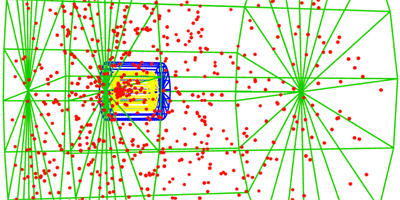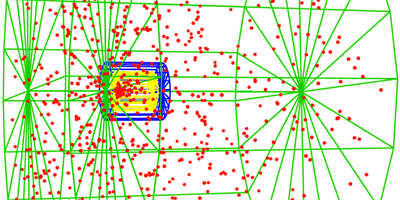In Search of Sterile Neutrinos
Neutrinos emerge from weak nuclear reactions in the sun, but for decades, detectors on earth measured only about a third of the expected number. This difference arises, we now know, because different neutrino flavors are mixtures of states that vary slightly in mass, so the original electron neutrinos transform over their long transit into muon and tau neutrinos, which the early detectors couldn’t see. Some physicists suspect that a similar oscillation may underlie small discrepancies in neutrino counts at several earthbound reactors. Explaining changes over distances of meters, however, requires new flavors of neutrinos with mass differences perhaps a hundred times larger, and which have no detectable interactions.
To look for such “sterile” neutrinos, Adriana Bungau of the University of Huddersfield, UK, and coauthors propose, in Physical Review Letters, monitoring the decay of lithium nuclei over the course of several years. Unstable lithium- isotopes would be continuously created by slamming energetic protons into a football-sized cylinder of beryllium- surrounded by a refrigerator-sized cylinder of lithium- . Over five years, the decaying nuclei would produce about antineutrinos, almost a million of which would produce a measurable neutrino reaction signature in a nearly- -ton detector some ten meters away.
The team estimates that, with this large supply of detectable neutrinos and what is known about sterile neutrino parameters from previously measured anomalies, they would easily see a slight decrease in the number of detected neutrons that varies periodically with the neutrino energy—a signature of sterile neutrinos. The scheme should also distinguish between a model with one sterile neutrino and a model with two that fits the existing data better. – Don Monroe





